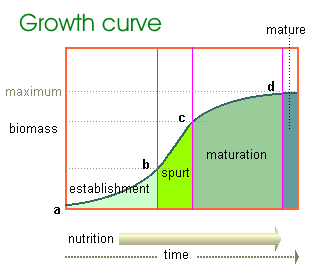The basic model combines a series of cause-and-effect relationships into a single "locational-state model". This is a determinate model. A determinate model links a series of property values, refereed to as determinants, to some target property value of interest. The value of interest might be a crop yield or the levels of competence of a human operator or machine efficiency associated with different levels of throughput. Therefore the "locational state model" links all known factors that determine a result of interest.
In information technology, circuit and program design, the equivalent would be what is referred to as a "state machine". However, the "locational-state model" is distinct because the determinant states will normally change as a function of the object (system) location in three dimensional space (longitude, latitude and attitude) and with time. Time is measures as chronological time as well as the age of the object whose target property is being measured.
General determinate relationship
One common factor in most cause-and-effect relationships is that the relationship between the state of a target property (value) and the determinants take on a similar profile. For example, the growth of a plant in a specific ecosystem, of a crop response to fertilizer or the effectiveness of someone learning how to carry out a task. Similarly, the operational hours of a machine's working life will depend upon the levels of car and maintenance over time and the accessibility of goods and services to people with different real incomes follow a similar trajectory. For many statistical series the cumulative result of a property follows the similar shaped curve. This common, and what appears to be a universal relationship, for all animate-inanimate systems takes on the form as shown below:

Locational-state theory and its laws relate to the combinations of determinant states that are associated with a state of the target property. So there are data sets made up of a subgroups of data elements consisting of the values of determinants and the associated state of the target property. If there is any change in the location in the space-time dimension of the object, then there will be transitions to different sets of determinant states and the associated target property state. Within the determinant sub-set some determinants will be fixed in value but their effects will vary with space-time dimensions.
The laws - basic propositions
1. Any number of factors that determine a specific property value in a living object or operational mechanism , influence the degrees of their impacts on an object property value in a reciprocal, or non-linear, manner with the orientation of the output relationship effect can be both positive or negative.
Example: The image below shows a comparison of the biomass production of a plant associated with different levels of total inputs such as nutrients or water.

2. The nature of the property value responses are determined by the genetic makeup of the living object or the design of the inanimate mechanism. The genetic makeup of an animate object results in its response to inputs varying according to a time-based sequence of property states associated with the whole life cycle of the object as well as the annual, and sub-annual increment-based cycles that affect both life cycle responses and the impacts (degree of influence) of other determinants.
Examples: At each life stage the input requirements will vary to support different stages of growth in plants and animals directly linked to the nutritive balance of inputs.

3. Whereas the determinants of production need to be combined in a specific quantitative proportion of defined qualities to achieve efficient and effective output at any point in the life cycle, often determined by the genotype (DNA instructions) the reduction of any single determinant will act as a constraint that reduces the impact of all other determinants on production.
Examples: Examples include vitamins and minerals required in quite small quantities can impact the contribution of other nutrients on human, plant and animal growth and wellbeing. Deficiencies in single nutrients can cause degenerative effects and disease.
4. Whereas the determinants of production need to be combined in a specific quantitative proportion of defined qualities to achieve efficient and effective output at any point in the life cycle, determined by the genotype (DNA instructions), the increase of any single determinant will have less impact as a result of the constraining effect of the other determinants not rising in the proportion determined by the genotype.
Examples: Different treatments; ceteris paribus; deficiencies
5. In all cases under items 2, 3 and 4 the response of output to increasing inputs (determinants) has the characteristic of diminishing rises of output in response to increasing input values of determinants (diminishing marginal returns).
Examples: 
Different treatments; ceteris paribus; deficiencies
6. Whereas the determinants of production need to be combined in a specific quantitative proportion of defined qualities to achieve efficient and effective output, raising input levels beyond a defined level will have the reverse effect on production and even prejudice the survival of the organism or machine that converts inputs into production.
Examples: Disease, deficiencies

